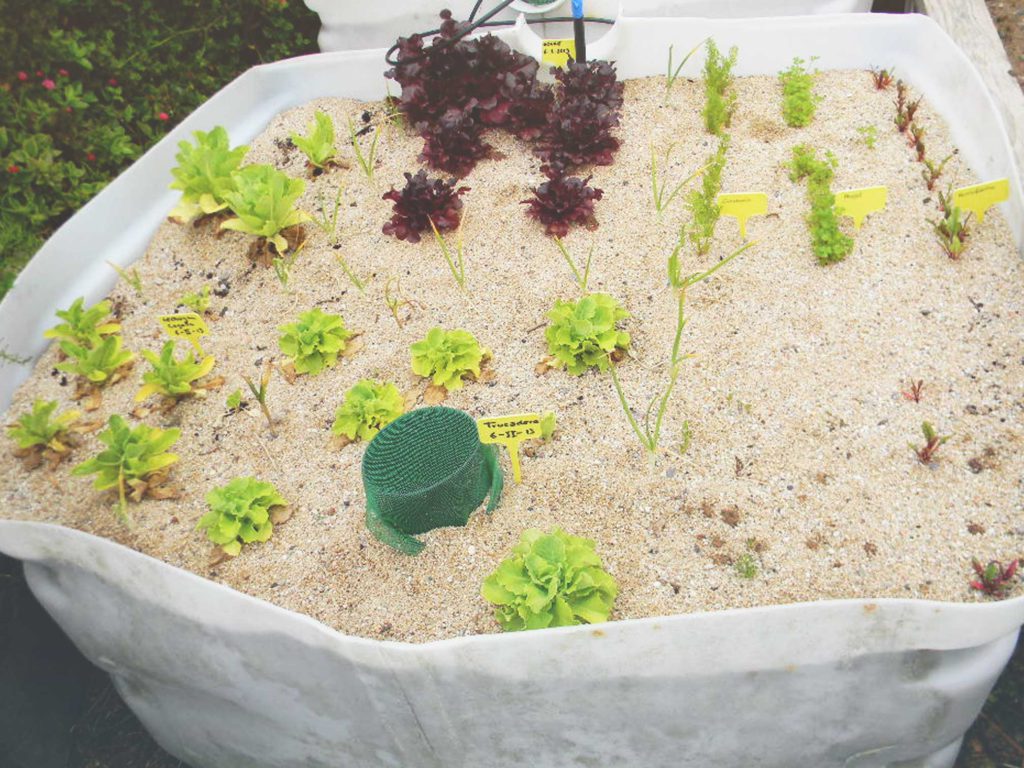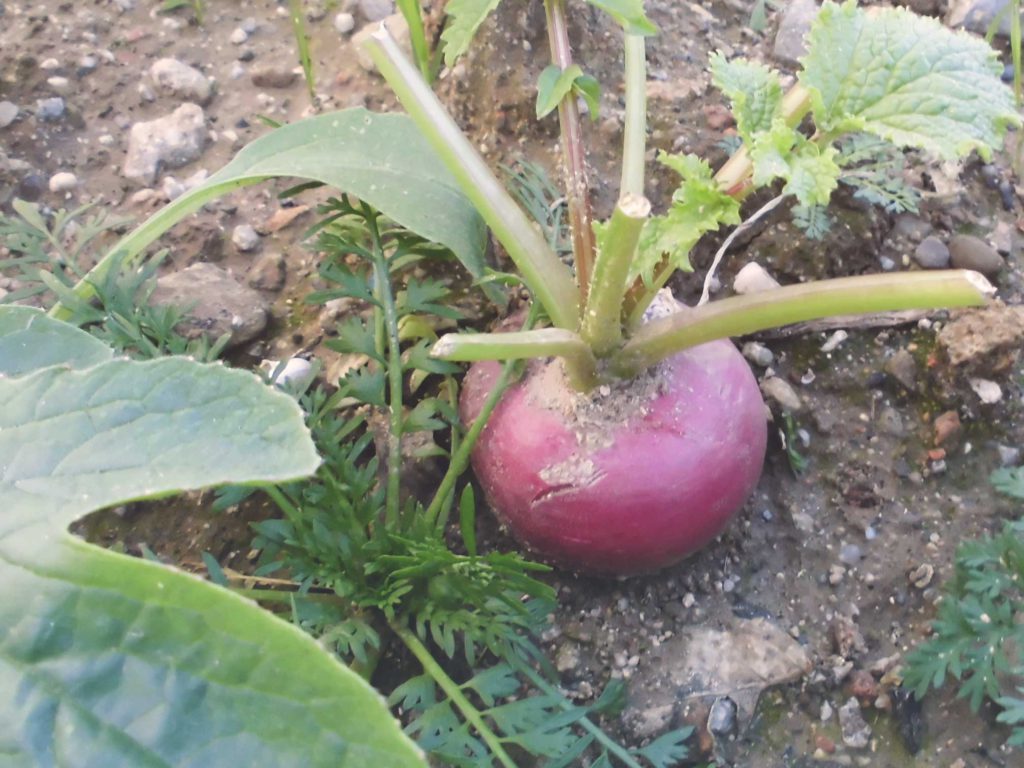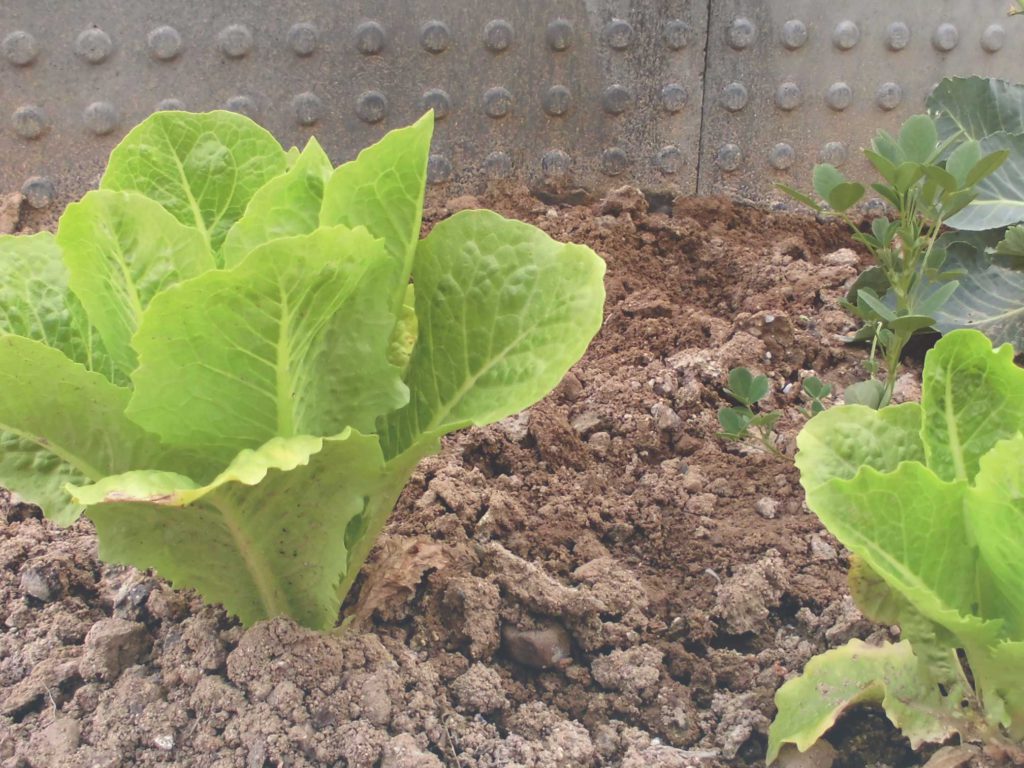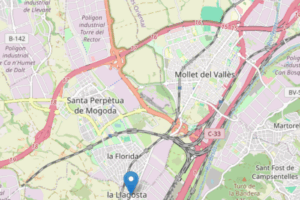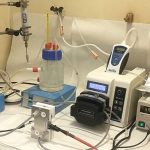
WhATTer: Green hydrogen from wastewater: energy and water circularity in the textile industry
May 30, 2025
Agrixels: Agricultural Information Standard Oriented Towards AI-Based Services for Use Cases in the Agri-Food Sector
June 19, 202516/06/2025
The Food Safety and Control Research Centre (CRESCA) at the Universitat Politècnica de Catalunya – BarcelonaTech (UPC), in collaboration with the Aqua Maris Foundation, has developed a system that allows irrigation using seawater without the need for filtration, desalination, or chemical treatment, both in agriculture and gardening. This innovative approach allows ornamental garden plants and leafy vegetable crops to adapt to saline conditions, eliminating the need for fresh water altogether.
The planet is facing an unprecedented water crisis: 98% of available water is saline (only 2% is fresh), and 70% of that is used in agriculture. With the growing demand for food and the worsening effects of climate change, the agricultural sector is facing a major challenge. According to forecasts, by 2025 two-thirds of the world’s population will suffer from water scarcity. In this context, it is urgent to innovate in efficient and sustainable irrigation systems that reduce dependence on fresh water and take advantage of abundant resources such as seawater.
In this context, the Agua de mar project has emerged. It is an innovative system that allows irrigation with seawater without the need for filtration, desalination, or chemical treatment. The system is based on capillary irrigation (i.e., watering from below the soil), through the construction of a controlled artificial water table located beneath the ground. This structure supplies the upper substrate layers with the necessary moisture to maintain, for example, a garden of ornamental plants in optimal condition.
This structure mimics the behavior of a natural water table, which is a subterranean water reserve formed when rainwater or other sources infiltrate the ground and accumulate at depth.
To operate the system, a seawater intake point and a return point are needed. Seawater is extracted from the marine aquifer through the construction of a lined well. This greatly reduces the risk of clogging and high maintenance costs. The extracted seawater is channeled to the base of the garden or the artificial water table. The water flows from one end to the other, enabling constant renewal and avoiding the generation of brine (highly saline wastewater).
Using a natural filter in contact with the seawater and leveraging its capillary properties, water and moisture are delivered to the upper soil layers. This filter helps reduce seawater conductivity, thus preventing soil oversalinisation. Its most remarkable feature is its self-regeneration capacity. At any time, without altering the garden’s composition, the filter can be restored to its original state, removing all accumulated salts without losing its properties.
Impact
The system has been tested both in gardening and agriculture. As a pilot project, a garden at the Joan Maragall Center in Badalona has been in operation for six years. It is located about 650 meters from the shoreline. The saline water comes from a 25-meter-deep well, with strong marine intrusion and a concentration of about 24–26 grams of salt per liter.
In the agricultural field, tests have been carried out with crops such as potatoes, lettuce, cherry tomatoes, and especially chard. The trials have shown that irrigating with seawater can shorten crop cycles—as in the case of chard, which can be harvested in 28 days instead of 42—and that the resulting vegetables can have up to three times the nutritional content of those irrigated with fresh water. In some cases, a naturally more intense flavor has also been observed, as with cherry tomatoes.
Expert chefs from the Alícia Foundation have highly praised these qualities in cooking, confirming that this system can produce superfoods and be a realistic and sustainable alternative in times of drought, reducing reliance on fresh water and improving food quality.
Budget and Funding
The project, with a duration of nine years (2009–2017), is the result of a collaboration between the Aqua Maris Foundation, the CRESCA of the UPC, and the ISMET training center. It began with the installation of a pilot garden at the Foundation’s headquarters in Badalona; later, detailed trials and monitoring were conducted at CRESCA’s laboratories and greenhouses, culminating in the creation of Seawater Irrigation Systems, S.L.
To make this journey possible, a total investment of between € 500,000 and € 700,000 has been mobilised. This range includes, on the one hand, in-kind contributions from research staff and use of equipment at CRESCA-UPC; and on the other hand, direct costs and R&D activities covered by the Aqua Maris Foundation (construction and maintenance of pilot sites, acquisition of sensors and materials, periodic analyses, and technology transfer efforts).
The combination of public and private resources has enabled the achievement of TRL 6–7 in gardening and TRL 4 in agriculture, with a relatively modest investment—demonstrating the economic and environmental feasibility of the technology and paving the way for new funding to scale it commercially.
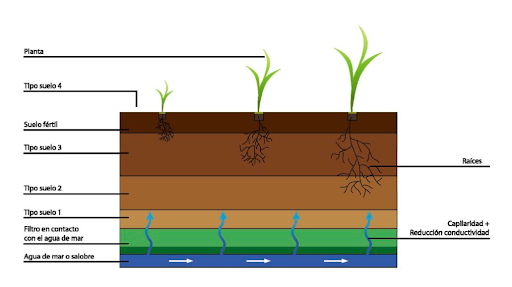
You want to know more?
Related Projects
- The Centre of Technological Innovation in Power Electronics and Drives (CITCEA) of the Universitat Politècnica de Catalunya - BarcelonaTech (UPC) is leading a European project that redesigns the current energy system to stabilise the power grid in the face of high renewable energy penetration. The proposed solutions involve using the loads that consume energy to help balance the grid.
- A team from the Environment Centre Laboratory (LCMA) of the Universitat Politècnica de Catalunya - BarcelonaTech (UPC) is taking part in a study commissioned by the city councils of la Llagosta, Mollet and Santa Perpètua (in Vallès Occidental), with the main objective of identifying the impact of industrial plants on the generation of unpleasant odours and continuously monitoring air quality in these municipalities.
- Researchers from the Concrete Sustainability and Smart Structures (C3S) research group, part of the Construction Engineering (EC) group at the Universitat Politècnica de Catalunya - BarcelonaTech (UPC), are leading the CIRC-BOOST project, which aims to promote sustainability, industrial competitiveness and greater resource efficiency in the European construction sector.
- A research team involving the Barcelona Innovative Transportation (BIT), inLab FIB, CARNET Barcelona – Future Mobility Research Hub (CER-AMA), and the Department of Computer Architecture (DAC) of the Universitat Politècnica de Catalunya - BarcelonaTech (UPC) is driving the i-MovE project, which aims to incorporate multisectoral data to provide much more accurate and valuable information for the mobility sector. The project develops four use cases focused on both companies and mobility authorities, covering public and individual transport, using the UPCxels demonstrator.

